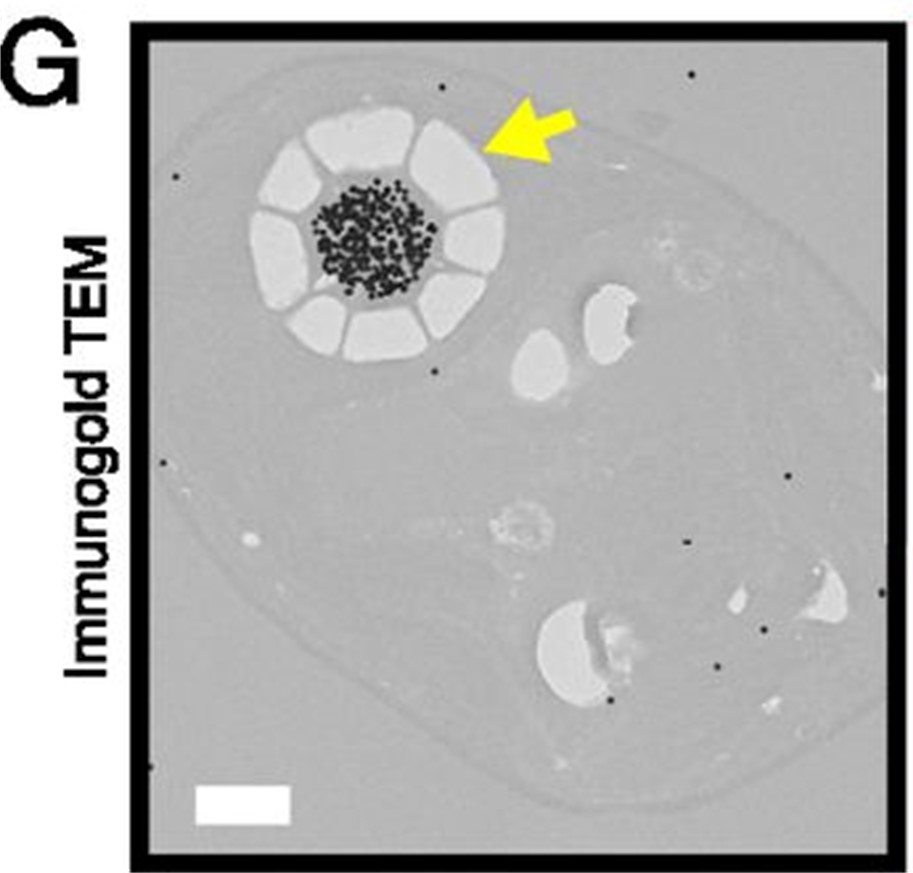Virtually all life on Earth depends on photosynthesis. This fundamental process is a major component of the planet’s carbon cycle and is a crucial negative feedback against climate change. Roughly half of photosynthesis occurs in the Oceans, where in vast regions, it is limited by nutrient availability.
In these ocean deserts, the dominant eukaryotic phototrophs are single-celled green algae. Many green algae possess a specialist organelle, the pyrenoid, to concentrate CO2 around the enzyme Rubisco to facilitate efficient carbon fixation (He et al., 2023). However, this organelle appears to be lost in dominant picoeukaryotes belonging to the Chloropicophyceae (Lopes dos Santos et al., 2017). This draws a parallel with the dominant prokaryotic phototroph in these environments, Prochlorococcus, which has evolved a completely different carbon concentrating machine (Cabello-Yeves et al. 2022, Fig. 1). Therefore, we hypothesise that evolution toward low nutrient environments has selected for specialist carbon concentrating machines in both prokaryotes and eukaryotes.
To test this, you will perform the first physiological and biochemical characterisation of the carbon concentration machinery of the Chloropicophyceae. You will combine transcriptomics, radioisotope uptake assays and advanced bioimaging with physiological assays to understand the acclimation response of these phytoplankton to inorganic carbon availability. You will compare this response across gradients of nutrient limitation to understand the intersection between nutrients and inorganic carbon. This will be compared across multiple strains of Chloropicophyceae and broader green algal group to understand the evolution of these responses.
Figure 1: Example of a carbon concentrating pyrenoid from the green alga Chlamydomonas. Rubisco is labelled with gold nanoparticles and is concentrated in a specific site. Image from Mackinder et al., 2016.

This project is not suitable for CASE funding
Each host has a slightly different application process.
Find out how to apply for this studentship.
All applications must include the CENTA application form.
Choose your application route
You will use a combination of standard physiological assays including phytoplankton growth and elemental composition (Ebenezer et al., 2022). This will be combined with more specialised photosynthesis techniques including fast-repetition rate fluorescence and Joliot type pump-probe spectroscopy as well as isotope uptake measurements. You will link these with high-throughput transcriptomic techniques to understand the acclimation response to CO2. At the same time you will use advanced bioimaging research technology platform to perform high-resolution electron microscopy and immune-fluorescence microscopy.
DRs will be awarded CENTA Training Credits (CTCs) for participation in CENTA-provided and ‘free choice’ external training. One CTC can be earned per 3 hours training, and DRs must accrue 100 CTCs across the three and a half years of their PhD.
You will be part of an interdisciplinary team of environmental microbiologists at Warwick. Currently, the Puxty lab is home to three post-doctoral scientists and two other PhD students. On top of project specific training in specialist techniques (see methodology), you will receive general training to enhance your career opportunities. This includes weekly lab meetings, scientific writing, engagement in research cluster activities and attendance to international conferences. There will be opportunity to collaborate and travel between the interdisciplinary supervision team to learn both specialist and generic skills.
Year 1: Physiological responses to CO2. Growth rates, nutrient limitation experiments and transcriptomics.
Year 2: Preparation of manuscripts from year 1 data. Advanced bioimaging and development of genetics.
Year 3: Comparative physiological experiments between selected strains.
Throughout each year, there will be a focus on production of manuscripts and career development opportunities. These include grant writing for external funding and fellowships.
Cabello-Yeves P., et al., 2022. α-cyanobacteria possessing form IA RuBisCO globally dominate aquatic habitats. The ISME Journal, 16 (10), 2421-2432
Ebenezer et al., 2022. Elemental and macromolecular composition of the marine Chloropicophyceae, a major group of oceanic photosynthetic picoeukaryotes. Limnology and Oceanography, 67 (3), 540-551.
He S, Crans VL, Jonikas MC. 2023. The pyrenoid: the eukaryotic CO2-concentrating organelle. The Plant Cell, 35 (9), 3236–3259.
Lopes dos Santos A, et al., 2017. Chloropicophyceae, a new class of picophytoplanktonic prasinophytes. Scientific Reports, 7: 14019
Mackinder et al., 2016. A repeat protein links Rubisco to form the eukaryotic carbon-concentrating organelle. PNAS. 113 (21) 5958-5963
For any enquiries related to this project please contact Richard Puxty, [email protected].
To apply to this project:
Applications must be submitted by 23:59 GMT on Wednesday 7th January 2026.